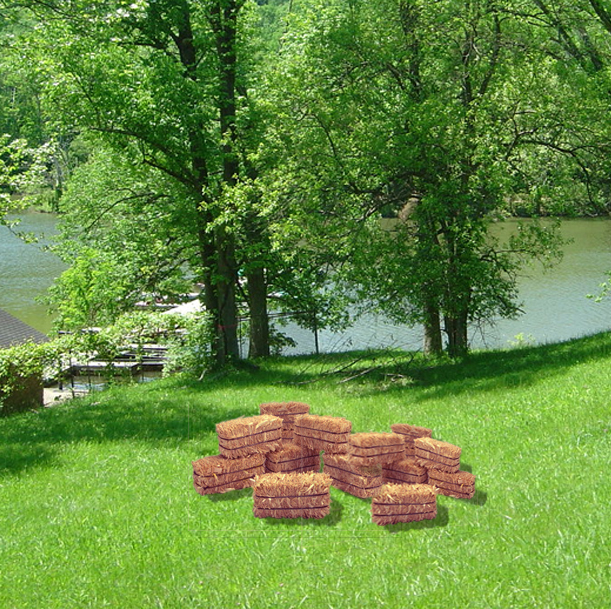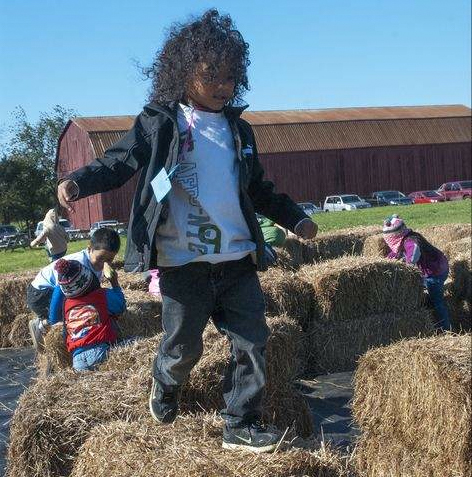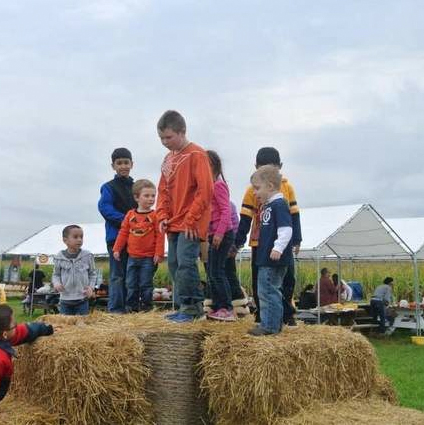Yes, this is a straw bale. We use straw (and not hay) bales because they typically don’t have seeds in them. It is probably the neatest (and cheapest) loose part you could get that allows children to create their own spaces for play.
We have seen children make seats and benches, forts, tunnels, mazes, jumps, bridges, buildings, and other structures requiring creativity and cooperation. If you also give them old sheets, or towels and blankets, they can create some really fun -- and shady -- spaces all by themselves, and those spaces will change from day to day.
Keep in mind that these Straw Bales make excellent seats/benches for kids in an outdoor classroom setting, not only because they are very portable and can be arranged in any desirable grouping, and easily spaced 6’ apart.
You should get at least 4 of these straw bales, but the more the merrier! And at this price, it’s one of the least expensive play options you can have for your kids (and it will be one of their favorites)!
You can also use the bale as a planter. The bale is dense (tightly packed), so you can actually cut a hole out of the bale, fill it with potting spoil, and plant flowers.
When the bales start breaking down from constant exposure to the weather, you can actually plant tomatoes and potatoes right in the old, rotting bale -- without using any soil! The roots weave through the hay and get their nutrients from the decomposing material. The hay keeps the roots insulated and retains the moisture the plants require.
Another option is to break the bales apart and use the hay for mulch (it may still have seeds in it, so you may have some friendly seeds sprouting), or put it in your compost pile or bin.
You might want to establish some simple rules, like no stacking end on end, or stacking no more than two tall, but other than that, let the kids have fun!
Typical bales measure ~15”h x ~20”w x ~36” long (they can vary) and weigh around 40 pounds. They should last at least a year, more if you cover them to keep rain and snow off.
Shipping Hay Bales to California is not possible.







 HOME
HOME New Items
New Items Outdoor Classrooms
Outdoor Classrooms STEAM Learning
STEAM Learning Backyard Ideas
Backyard Ideas Embankment Slides
Embankment Slides Stumps Logs
Stumps Logs Sand Play
Sand Play Water Play
Water Play Art Music
Art Music Science Nature
Science Nature Upper Body Challenge
Upper Body Challenge Rocks Boulders
Rocks Boulders Infants Toddlers
Infants Toddlers Loose Parts
Loose Parts Gardening
Gardening Labyrinths Sundials
Labyrinths Sundials TeePees Decks Gazebos
TeePees Decks Gazebos  Tunnels Bridges Caves Log Houses
Tunnels Bridges Caves Log Houses Benches Tables Hammocks
Benches Tables Hammocks Fencing
Fencing Design Services
Design Services Maintenance Storage Sanitation
Maintenance Storage Sanitation Pavement Game Templates
Pavement Game Templates